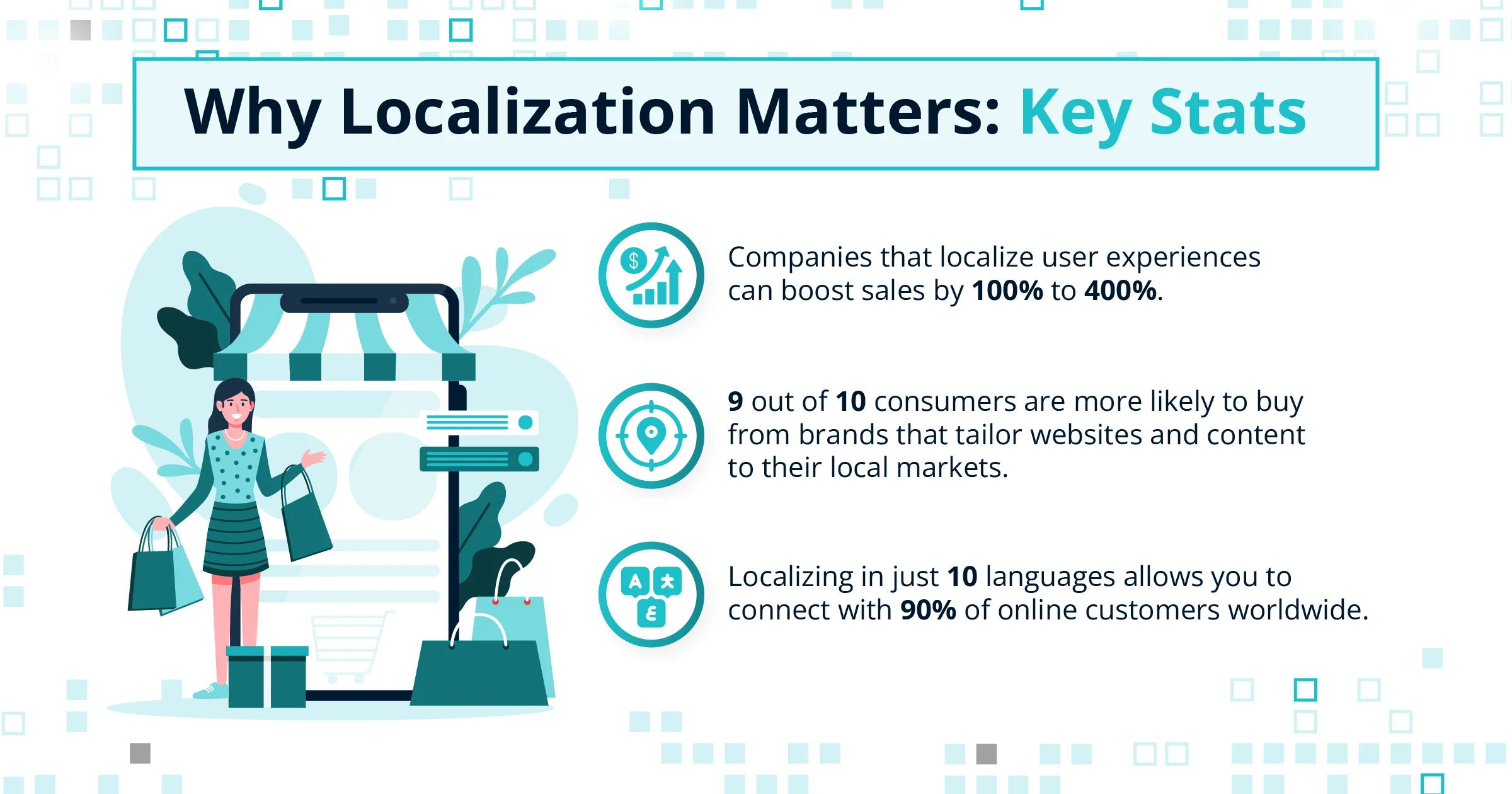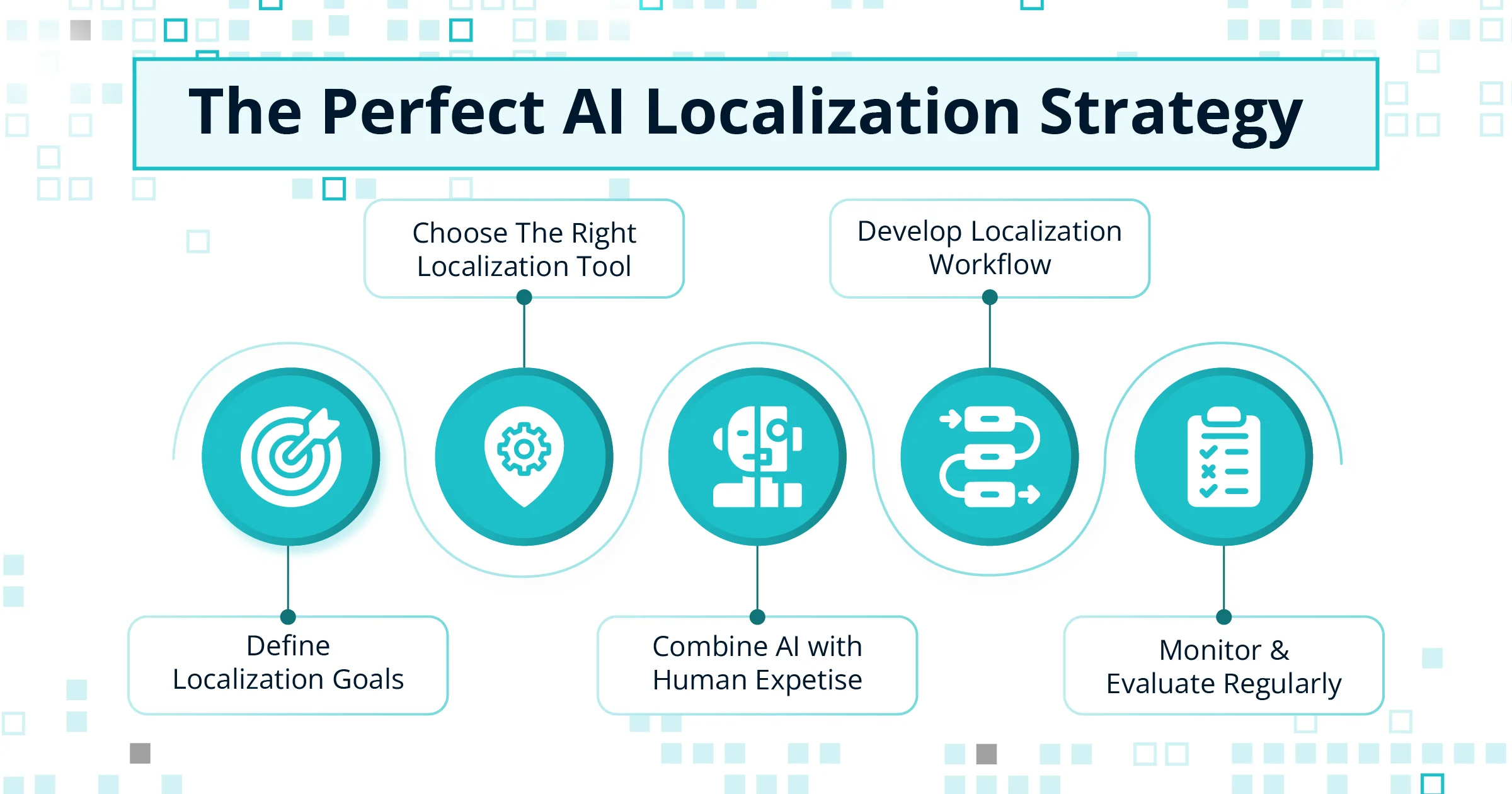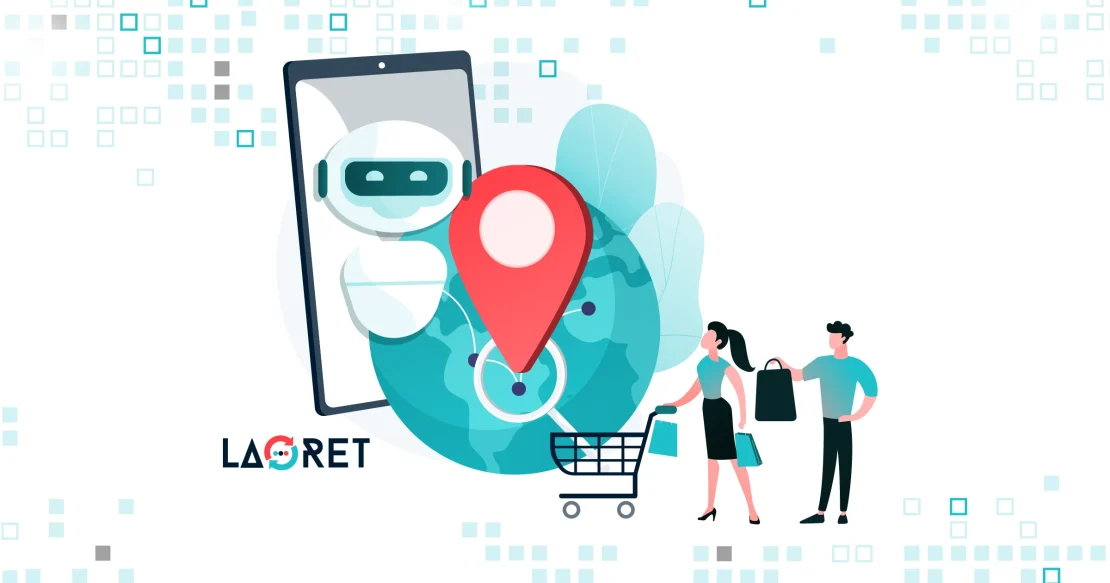AI Localization: Unlock Global Growth with Intelligent Language Solutions
While accurate language translation remains crucial, cultural adaptation has become essential for truly connecting with global audiences.
The booming eCommerce market offers incredible opportunities—but only for businesses that can effectively reach diverse audiences across languages and cultures.
Traditional localization methods often struggle to keep pace with today’s content demands. Enter AI localization. By leveraging cutting-edge technology, businesses can now transform their global outreach.
This blog explores how intelligent language solutions unlock unprecedented growth opportunities. We’ll examine AI localization’s key benefits, compare it with traditional approaches, and share best practices – all while highlighting the vital role human expertise plays in this evolution.
Let’s start!
What is AI Localization?
Let’s start with the basics: what exactly is AI localization?
AI localization combines artificial intelligence with traditional localization practices to transform global content adaptation. It integrates AI technologies throughout the localization workflow, from initial translation to final quality checks. Think of it as a smart assistant that helps businesses create culturally relevant content for global markets faster and more efficiently.
The concept is straightforward: AI-powered tools automate repetitive tasks while supporting human linguists in delivering high-quality localized content that truly resonates with diverse audiences. Rather than replacing human expertise, AI enhances the localization services process by making it smarter, faster, and more consistent.
Key Components of AI Localization:
AI localization relies on several key technologies working together to transform how we adapt content for global audiences. Let’s break down these essential components:
Machine Translation
Neural machine translation (NMT) is the engine behind AI localization, quickly translating content into multiple languages. While faster and more accurate than older systems, it works best with human oversight to ensure quality.
Machine Learning and Natural Language Processing
Machine learning and natural language processing (NLP) help AI systems understand context and cultural nuances. By analyzing vast amounts of language data, these tools become better at producing culturally nuanced translations.
Translation Memories
Translation memories store previously approved translations, ensuring consistency across projects and reducing costs by avoiding duplicate work. Think of it as a smart database that learns from every project.
Other AI Technologies
AI also helps with visual content through computer vision and checks cultural appropriateness through sentiment analysis, making the localization process more comprehensive.
Now, Let’s explore how AI localization transforms global business operations with these key benefits:
Benefits of AI Localization
-
Increased Speed and Efficiency
AI localization drastically accelerates the process of translating content and adapting it for global markets. With real-time translation capabilities, AI-powered tools can handle large volumes of text quickly, cutting turnaround times significantly compared to traditional methods. This allows businesses to launch products and services in new markets faster, gaining a competitive edge with reduced time-to-market.
-
Cost Reduction
By automating repetitive tasks like translation memory management and quality checks, AI localization reduces the need for extensive manual effort, especially in large-scale projects. This efficiency lowers overall costs, making localization more affordable and accessible for businesses aiming to expand globally.
-
Improved Accuracy and Consistency
AI-powered tools ensure more accurate translations by leveraging advanced algorithms and large language datasets. They also maintain consistency across technical or specialized content, ensuring terminology and tone stay uniform throughout the project, which is crucial for building trust and professionalism.
-
Enhanced Scalability
AI localization empowers businesses to scale their efforts seamlessly. It enables the simultaneous adaptation of content for multiple languages and regions, making it easier to expand into global markets without overburdening resources.
-
Improved Cultural Relevance
With natural language processing (NLP) and machine learning, AI localization tools can produce culturally nuanced and culturally relevant translations. These tools analyze context and adapt content to reflect local values, traditions, and communication styles, creating content that resonates with diverse audiences.
-
Better User Experiences
Delivering accurate, fluent, and culturally appropriate content through AI localization enhances user experiences. When users encounter content that feels natural and tailored to their culture, it fosters engagement, satisfaction, and brand loyalty, driving success in global markets.

After all that, you might still be wondering why AI localization could be the better choice over traditional human localization. To make it easier, we’ve laid it out for you in a simple comparison table:
AI Localization vs. Traditional Localization
| Feature | AI Localization | Traditional Localization |
| Speed | Rapid processing of large volumes in real-time | Time-intensive, sequential process |
| Cost | Lower costs for large projects; initial setup investment | Higher per-word costs; predictable pricing |
| Scalability | Easily handles multiple languages simultaneously | Limited by human resource availability |
| Quality | High consistency but may miss cultural nuances | Superior cultural adaptation but potential consistency issues |
| Human Involvement | Limited to oversight and post-editing | Complete human control throughout the process |
| Best Used For |
|
|
| Strengths |
|
|
| Weaknesses |
|
|
After this detailed comparison, it’s important to note: AI isn’t replacing human translators, it’s transforming their role. While AI handles repetitive tasks and high-volume content, human translators now focus on more sophisticated work like cultural adaptation, creative translation, and quality assurance.
This partnership between AI efficiency and human expertise creates the most effective localization approach, combining speed with cultural authenticity. Know more about Machine Translation Post Editing Services
Best Practices for Implementing AI Localization
Implementing AI localization can revolutionize your global strategy, but to truly succeed, you need a thoughtful approach. Here are the best practices to ensure your localization efforts are impactful and efficient:
Clearly Define Your Localization Goals
Start by setting clear objectives for your localization projects. Ask yourself: What content needs localization? What is your target market? Defining these goals upfront will guide your strategy and ensure your efforts align with your business objectives.
Choose the Right AI Localization Tools
Selecting the right AI systems and technologies is critical. Evaluate tools based on your specific needs—whether it’s real-time translation, scalability, or handling technical content. Choose AI technologies that integrate seamlessly into your workflow and support your localization goals.
Combine AI with Human Expertise
AI localization works best when paired with human translators. While AI handles repetitive tasks, humans bring the creativity and cultural understanding needed for nuanced translations, transcreation, and quality assurance. This collaboration ensures high-quality, culturally relevant content.
Develop a Robust Localization Workflow
Establish a well-defined workflow that integrates AI tools effectively. This includes outlining processes for translation, cultural adaptation, and post-editing to ensure seamless collaboration between AI systems and human translators.
Continuously Monitor and Evaluate Your Strategy
Localization is not a one-time effort. Regularly monitor and assess your AI localization strategy to ensure it meets your defined goals. Stay adaptable to evolving market demands and leverage data insights to refine your processes for sustained success.
By following these best practices, you can maximize the potential of AI localization while delivering culturally resonant, high-quality content to your global audiences.

Our AI Localization Solutions At Laoret
At Laoret, we combine cutting-edge AI-powered tools with expert human insight to help businesses connect with global audiences. Our solutions deliver fast, accurate translations while ensuring your content resonates culturally with every target audience.
Whether you’re launching a global product or expanding into new markets, we tailor every solution to your unique needs. With Laoret, you get the speed and efficiency of AI backed by the cultural expertise of human linguists.
Contact us today to unlock the power of AI localization.






